I have a soft spot for plants that can serve multiple purposes.
That particularly applies to ornamentals that give you a dramatic display while being useful in the kitchen as well. Of all those wonderful edible flowers like fuchsias and roses, marigolds might be my favorite.
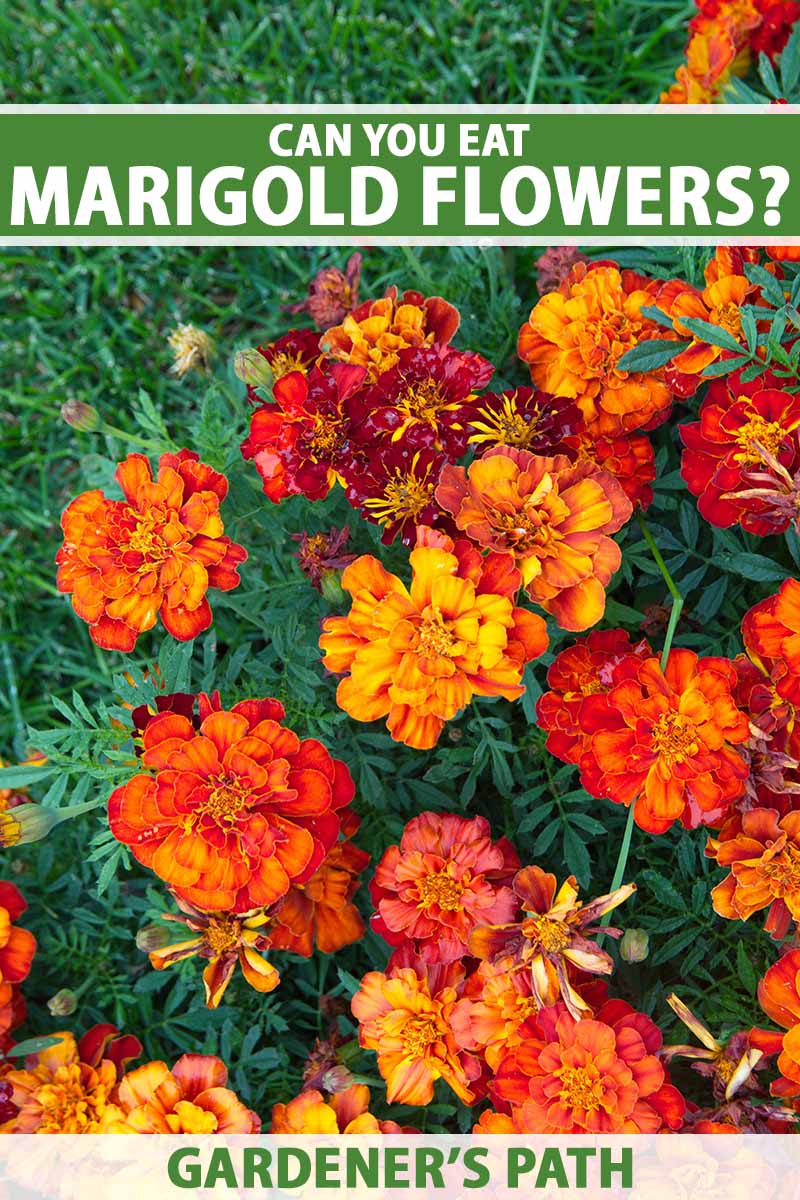
We link to vendors to help you find relevant products. If you buy from one of our links, we may earn a commission.
They’re so good! And extremely versatile.
On top of that, they’re simple to grow. They reseed readily, are rarely troubled by pests or diseases, and tolerate a pretty wide range of conditions – even drought and neglect.
So can you just pick the plants and start digging in? The quick answer is that, yes, they are edible. But there are some caveats. Here’s what we’ll discuss, coming right up:
What You’ll Learn
Did you know marigolds are often used commercially as a saffron substitute? Or that the flowers can be used in many ways beyond your basic salad topping?
Let’s explore the options!
Which Marigolds Are Edible?
There are six common species that we call marigolds:
- Pot or common (Calendula officinalis)
- Mexican, African, or Aztec (Tagetes erecta)
- French (T. patula)
- Lemon or signet (T. tenuifolia)
- Field (C. arvensis)
- Mexican mint (T. lucida)
They’re all edible, though calendula types tend to be a bit more bitter.
All of the species listed above are used as a colorant in food, while lemon is the type that’s eaten most frequently.
They’re all equally edible, however, and I recommend taking a few bites of each to figure out what you like best.
What Do They Taste Like?
Marigolds have a peppery, citrusy flavor. Think of something like arugula but with a bit of anise.

Calendula has more bitterness, while signet marigolds are generally thought of as having the best flavor. It’s a bit sweeter, with stronger citrus notes and less bitterness.
Species and Cultivars to Select
You can’t go wrong with just about any marigold and the choice is up to you, depending on the flavor, texture, or size of the ingredient you need.
The species and cultivars described below have particularly tasty flowers or leaves, so they’re worth a try.
Dropshot
‘Dropshot’ is an Irish lace marigold (T. filifolia). This is a lesser-known species and you won’t usually find it in gardens because it lacks the showy flowers that we love in other species. But it stands out as an edible herb.
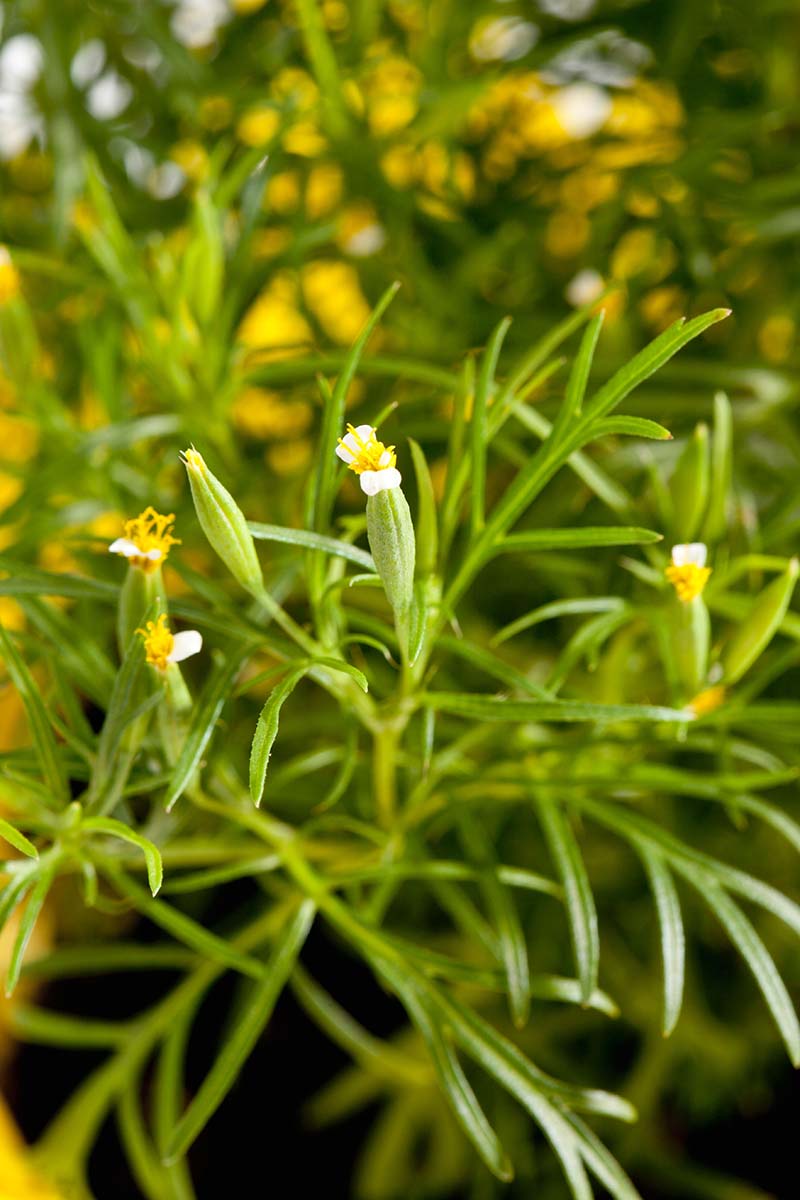
The leaves have a citrus-anise flavor that makes a good addition to a variety of recipes. As microgreens, they’re without equal.
You won’t have that pretty floral display, but I think the leaves are quite lovely all on their own. Plant them with showier flowers as an accent if you miss the display.
Grab a single plant or a pack of 100 seeds, available from Burpee.
Lemon and Tangerine Gem
T. tenuifolia ‘Lemon’ and ‘Tangerine’ Gem are the gold standards for edible marigolds.
The petals are flavorful without being bitter, and they have a citrus flavor with a hint of anise. Some say the orange flowers of the ‘Tangerine’ cultivar have a more pronounced orange flavor.
T. tenuifolia Lemon and Tangerine Gems
If you want to dip your toes into the marigold water, this is the type to start with.
Pick up a packet of seeds from Botanical Interests to start growing these yellow and orange beauties in your garden.
Mexican Tarragon
Also known as licorice or Mexican mint, this heirloom is aptly named regardless of the common moniker you choose to go with because it has a particularly pronounced herbal, anise-like flavor.
The flowers are petite and yellow, so this probably isn’t the best option if your major concern is to find a flower that makes a bold statement in the garden as well as the kitchen, but their subtle loveliness makes a wonderful addition to herb and container gardens.
Snatch up packets of about 200 seeds to add to your garden from Botanical Interests.
Pink Surprise
While many C. officinalis cultivars are valued more in the kitchen for their coloring abilities rather than their flavor, there are still many tasty options.
‘Pink Surprise’ is not only beautiful, but the flavor is pleasantly mild, especially if you snip off the white heels from the petals.
Pick up a small packet, or an ounce, quarter-pound or one-pound package of seeds at Eden Brothers.
Queen Sophia
This French type is good for growing as food because it has large petals that make harvesting and using them easier. The flavor is as good as any French option, but it’s particularly beautiful.
The flowers are stunning – double orange-red blooms outlined in gold.
Our friends at Eden Brothers carry ‘Queen Sophia’ in small packets, one-ounce, or quarter-pound packages.
Edible Parts and Harvesting Tips
The leaves and petals are all entirely edible, so feel free to dig in.
However, the leaves don’t taste great unless they’re young. They’re pretty bitter once they age. They can be blanched in water to reduce the bitterness, but you’re better off sticking with the young leaves.
The petals are the best-tasting part of the plant – except in the case of Irish lace marigold, T. filifolia, which has anise-flavored, lacy foliage and is often grown as an herb.
You can improve the flavor of the flowers by snipping off the white heels of the petals.
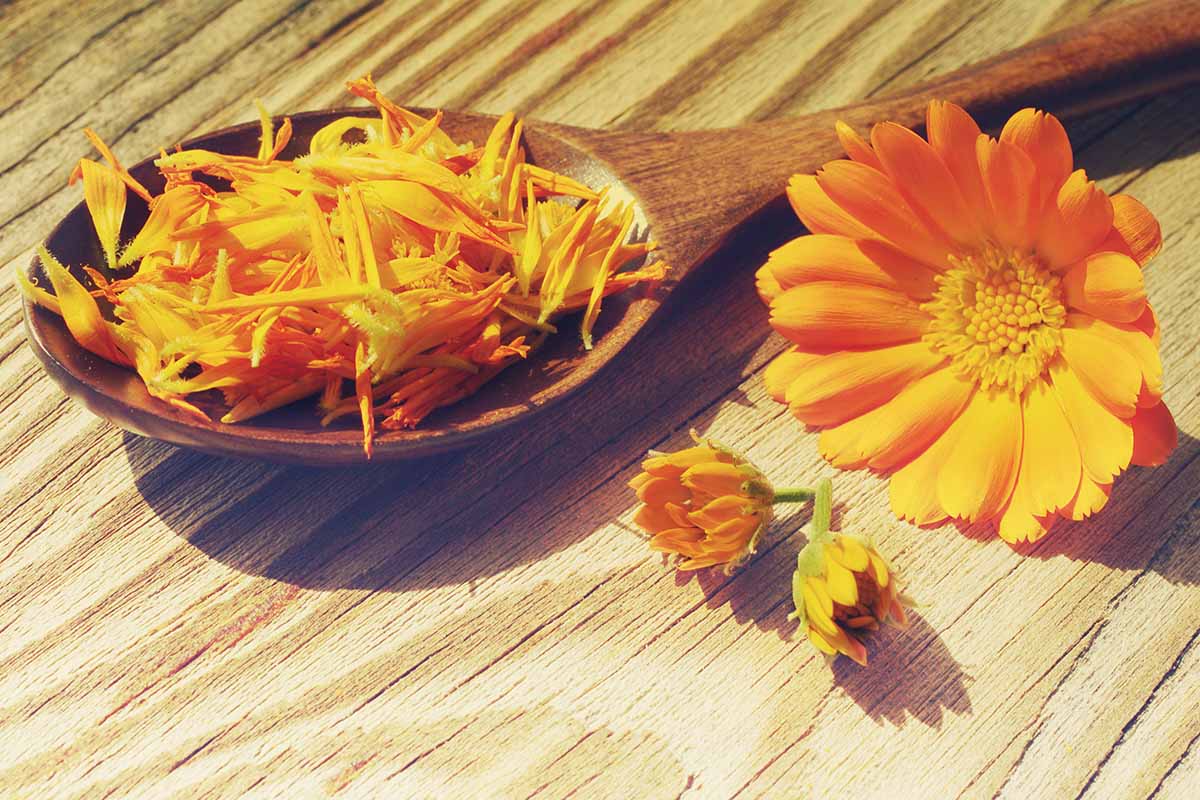
Regardless of whether you harvest the petals or leaves, do it in the morning when the weather is cooler and the plants have more moisture inside them.
Don’t choose flowers that have started closing.
To harvest, use scissors rather than tearing off the flowers or leaves.
If you buy starts at the nursery, snip off the existing heads and harvest the new, fresh flowers that replace them. You really don’t want to be eating stuff that might be covered in chemicals.
Similarly, if you spray your plants with herbicides, pesticides, or fungicides, check the label to figure out when or if it’s safe to eat the plants.
Preserving
You can store marigold flowers that you’ve harvested for up to a year by drying them.
Press the flowers between two pieces of paper and then place cardboard on both sides of the paper. Then, place the pack on a table or the floor and stack several heavy books on top. The flowers should be dry in a few weeks.
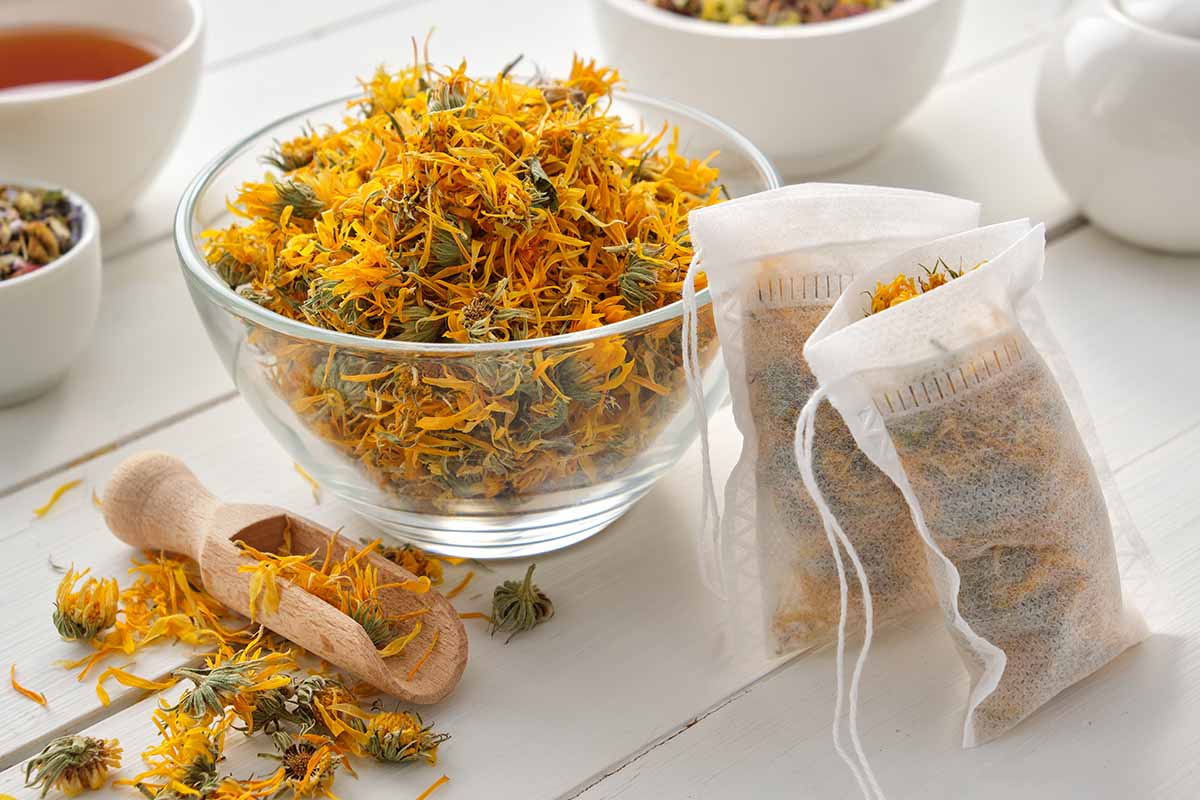
Alternately, bundle up the flowers and hang them by their stems in a protected area with good air circulation. Flowers take two to four weeks to dry this way.
If you’re short on saffron, you can grind up the dry leaves and petals to make a substitute. Use just the petals if you need the color rather than a more pronounced flavor.
If you’d rather freeze the flowers, fill an ice cube tray with water and press one washed flower into each section, then freeze.
You can also pickle the flowers and petals, and use the petals to infuse oil or vinegars. You can even make marigold-infused wine!
Recipes and Cooking Ideas
In “The Forgotten Art of Flower Cookery,” Leona Woodring Smith offers a recipe for “party” cheese sticks made with marigolds that is phenomenal.

The Forgotten Art of Flower Cookery
There is also a recipe for marigold cucumbers in this book that really highlights the flavor of the petals.
If you want to try either of these, pick up the book at Amazon.
While they’re common as a salad topper, and used on sandwiches or desserts as a garnish, don’t hesitate to think outside of the edible flower box.
The petals are perfect as an addition to cheese dip, quiche, or other types of egg dishes. Mix them into a tomato and cucumber salad. Or use the petals and young leaves to top avocado toast, roasted asparagus, or roasted chicken.
You might even mix the petals with rhubarb to top pudding, frozen yogurt, or a trifle, in place of a crumble.
I made the latter option and it knocked the socks off of everyone at my dining table (if I do say so myself!). Next, I’m planning to make almond and marigold biscotti as soon as my flowers start blooming.
A classic choice is to press the petals into the top of sticks or pats of butter for a striking table display.
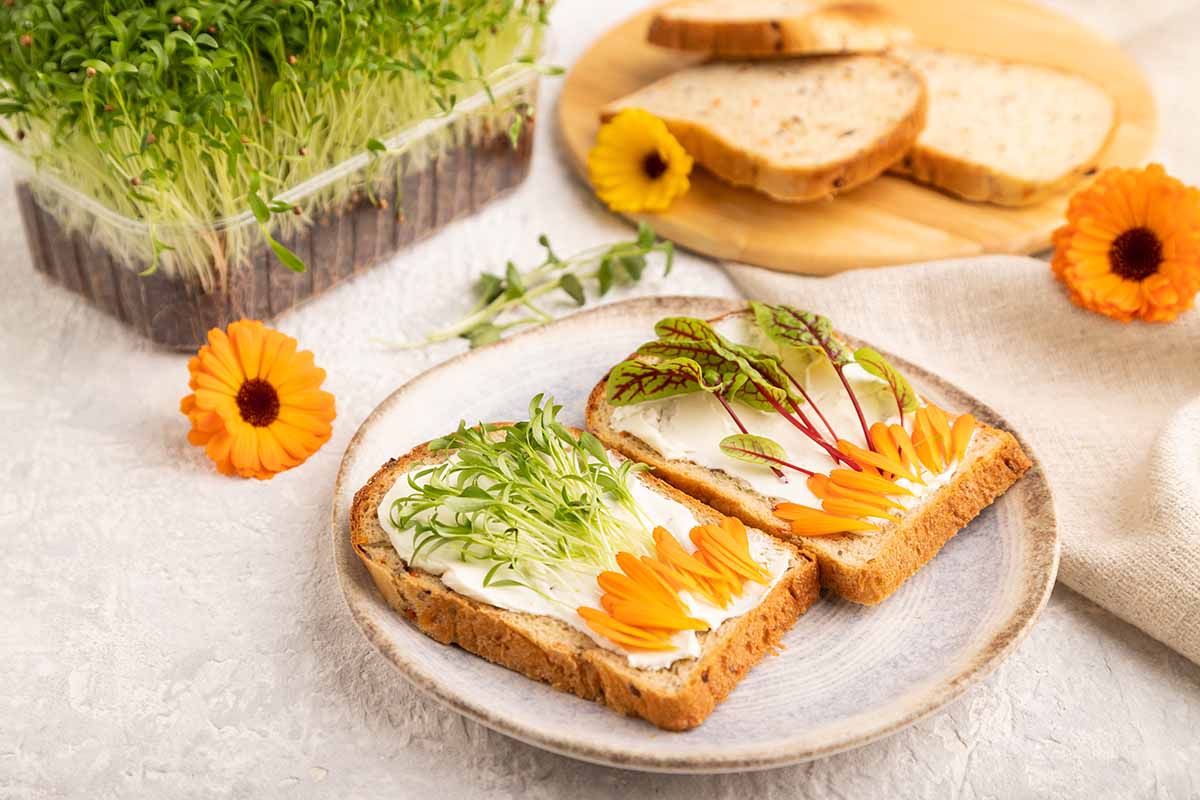
To eat the leaves, choose young, light green foliage and use it as a garnish, in salads, to season rice or vegetables, or to top soup.
Older leaves are best when they’re boiled and used like spinach. You can also blanch the leaves to make them a bit more palatable.
The petals are less bitter and can be eaten at any point in their lifespan, though the younger petals are best.
To reduce the amount of bitterness, snip off the white bit at the end of each of the petals after you pluck them from the flower head.
Make Marigolds a Part of Your Next Meal
I can’t think of a reason not to make marigolds part of your culinary garden. They don’t need much space. You can even grow them in containers. On top of that, they’re extremely versatile in the kitchen.
Some flowers have too much perfume to be included in anything but desserts or cocktails, but marigolds can make a savory meal shine just as wonderfully as a sweet one.

Which type is your favorite for snacking on? Do you prefer the leaves or petals? Let us know in the comments section below.
For more information on raising marigolds, you might find the following guides to be useful:
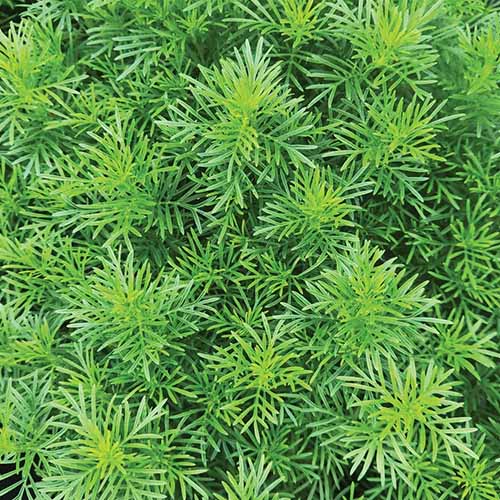
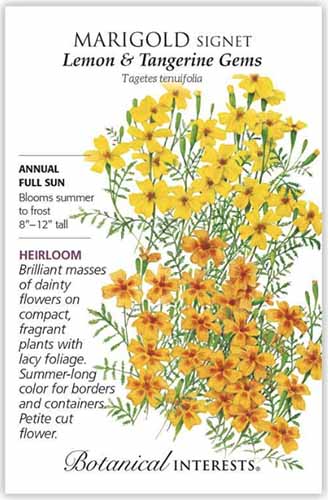

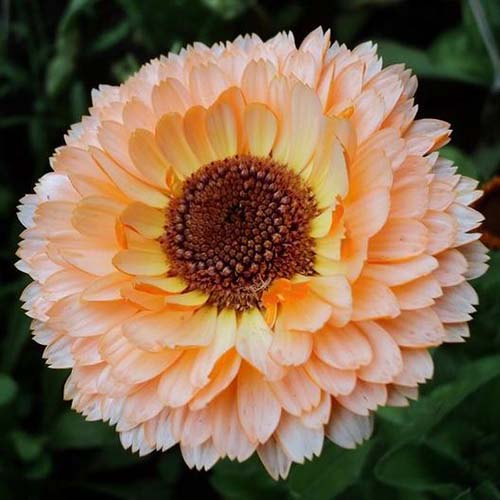

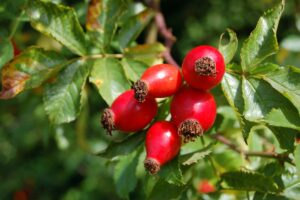
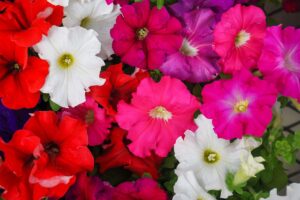

Thank you for this article. My African marigolds from Botanical Interests are about to bloom. It is confusing to decide whether to sample the leaves or flowers as many websites say this type of marigold is toxic. Would it be safer to blanch the leaves and flowers before eating? I am wondering how toxic they are…
Great question, Jennifer. Here’s some additional information for you- According to this study regarding the antioxidant benefits of Tagetes erecta published in the journal Nutrients in 2018, for example, “Tagetes erecta L. has long been consumed for culinary and medicinal purposes in different countries” and “This species is widely cultivated for ornamental, poultry, and medicinal purposes. Moreover, its flowers are used as an ingredient in salads and as natural food colorant since it is one of the most popular edible flowers all over the world.” Marigold flavonoids were also found to be safe in a study published in October of… Read more »